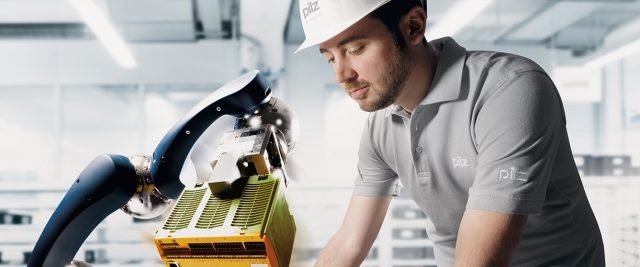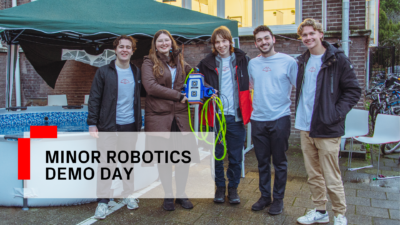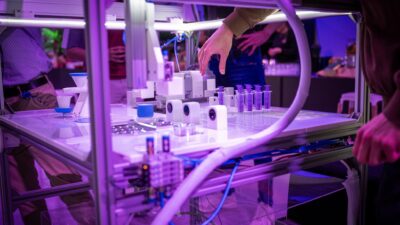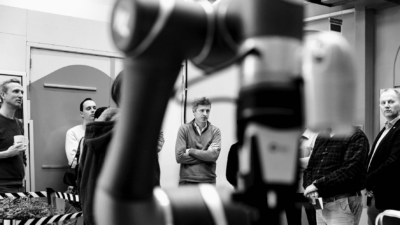In preparation for this interview with Mr Buisman, we spoke with Eva Leurink, manager of RoboAcademy and enthusiastic endorser of the Robot Safety training and Safety of Human Robot Collaboration that are currently on offer. Eva said: “Safety is not a sexy subject, but it’s very important. We want to reduce the fears that many people have for being in the same space as a robot. To help them gain trust in such a machine. Get a sense of security. That’s the goal. So that more people can work with robots.”
With that in mind, we traveled to Mr Buisman, robot safety consultant and trainer since 2010.
Q. Why have you spent the last ten years of your life on teaching safety?
“I was educated as a chemical engineer, and I tried many different career paths – until I finally landed here and found my sweet spot. I’m a bit of a blustering fellow, but this role brings out the best in me; my commitment to quality and pragmatic approach to safety. Cobots [collaborative robots] are now being introduced almost everywhere and this is wonderful, but I’m also very aware that one day something may go wrong. All it takes is for a cobot to accidentally touch a human’s body in the wrong place.”
Q. What do the people who enter your trainings tend to need most?
“Safety is not a burden you can carry on your own.”
Edwin Buisman, robot safety consultant
“I always begin any training by asking: “What is it that you want to learn from me today?” Almost everyone seems to have some worry or insecurity about official requirements and guidelines. People ask: ‘What am I supposed to know? What must I do to prove that I am operating my cobots safely?'”
Q. What is the most eye-opening insight that participants have?
“Participants are often relieved to find out that safety is a shared responsibility. It is not a burden you can carry on your own; this is always something for the entire team. I teach people not to put pressure on themselves, and to put the right questions to their own organisation.”

Q. How is robot safety different from machine safety?
“Compared to regular machines, collaborative robots have lots of safety features already built into them. This makes them quite versatile and easy to implement in production processes. It is often a matter of good configuration and awareness of the risks.”
“Like animals, cobots have their particular behaviours and instincts.”
Edwin Buisman, robot safety consultant
Q. Could you compare configuring a cobot with managing a farm animal?
“That’s a beautiful analogy. Like animals, cobots have their particular behaviours and instincts that – combined with your own reflexes as a human – can lead to dangerous situations that you must learn to avoid. Think of the practice of never moving behind a horse, not even to quickly grab your mobile phone after you’ve dropped it.”
Q. What is the most underestimated factor in robot safety?
“The influence of organisational culture is a huge factor in safety, and often underestimated. Think for example of the huge amount of biking that goes on in The Netherlands. Statistically you would expect to see far more accidents and injuries than we are actually seeing. And that with hardly anyone wearing a helmet. But Dutch culture is so adapted to biking that the environment is much safer for cycling than it may seem.
So before a training begins, I try to always wonder around the premises for a bit and get a feel for the company culture. And I usually like what I see. Things tend to go well, most of the time.”
Culture is also top of mind for Eva Leurink, who is the driving force behind the educational collaboration between Pilz Academy, RoboAcademy and fieldlabs RoboHouse and SAM | XL. She is helping to co-develop a safety training for working with cobots and automated guided vehicles. This new training will involve augmented reality and virtual reality. It is expected to be available early next year.



